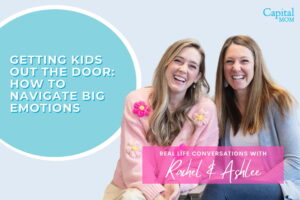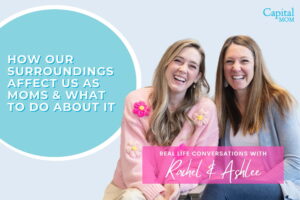
Refocusing When Life Gets Busy
One year ago this month, our world changed. My profession, like so many others, was sent home abruptly as different sectors in the world started shutting down. Everything about that time brought fear, uncertainty and disappointment. Some of these feelings still ring true today. Yet, this time also gave me something that I’m actually missing today…time.
Juggling A Busy Week
I thoroughly enjoyed not having commitments every single night of the week. This week, I have longed for those unexpected days that were given to me a year ago. This week, the supper table conversations have turned into drive-through conversations. This week, the conversations with my husband have turned into 10-minute lunch meetings just to plan out the evenings (those of you whose spouses are school administrators probably understand this). The introvert in me has wanted my husband to take me for evening drives just so I could stare out the window and listen to the complete silence.
In a world where busyness is valued and the norm, I took it upon myself to relinquish some responsibilities. However, it seems that all of the commitments I did keep on my plate needed my attention this week. Don’t take this the wrong way—I’m grateful the world is returning to a new normal. Yet, I’m so thankful that I realized how precious family time is and I’m missing that this week. The stress of the busyness just hit me and I need to refocus. Refocus on what I value. Refocus on being mindful. Actually, refocus and listen to myself.
Spending Time to Refocus
This morning, I told one of my students, “control what you can control, which is your attitude and effort.” In this conversation, I realized I wasn’t listening to myself. I was letting my negative attitude about no free time control how I was actually using my time. Honestly, two things were happening this week—I wasn’t allowing myself to recharge and I was allowing too many distractions to happen.
To help combat these issues, I need to go back to the basics of time management. I need to plan ahead. This would be the reason why there have been many drive-through conversations this week as I didn’t plan ahead and grocery shop. I need to prioritize my to-do list by making micro-goals. I need to set aside time where my door is shut and my phone is in another room, which will help eliminate distractions. And finally, I need to quit multitasking.
If there is one thing I appreciate from COVID-19, it taught me the value of time. It just so happens that the past few weeks, I let the busyness of life get to me. I need to refocus on the big picture, set micro-goals and limit distractions. In doing so, I will ultimately free up the time I so long for.

Shelly Mowinkel
K-12 & Teens
My husband and I have three kids. Our oldest is a freshman in high school, and our youngest is in second grade. Most days, I feel like we are a “tag-team chauffeuring” service, yet I wouldn’t have our life any other way. Not only I am a business/technology teacher at Milford, I am also the district technology integration specialist. I love teaching because I get the opportunity to make those around me better. My hope is that, through my blogging, I am able to inspire, encourage, and share with you my adventures of being a wife, mother, and professional.


























